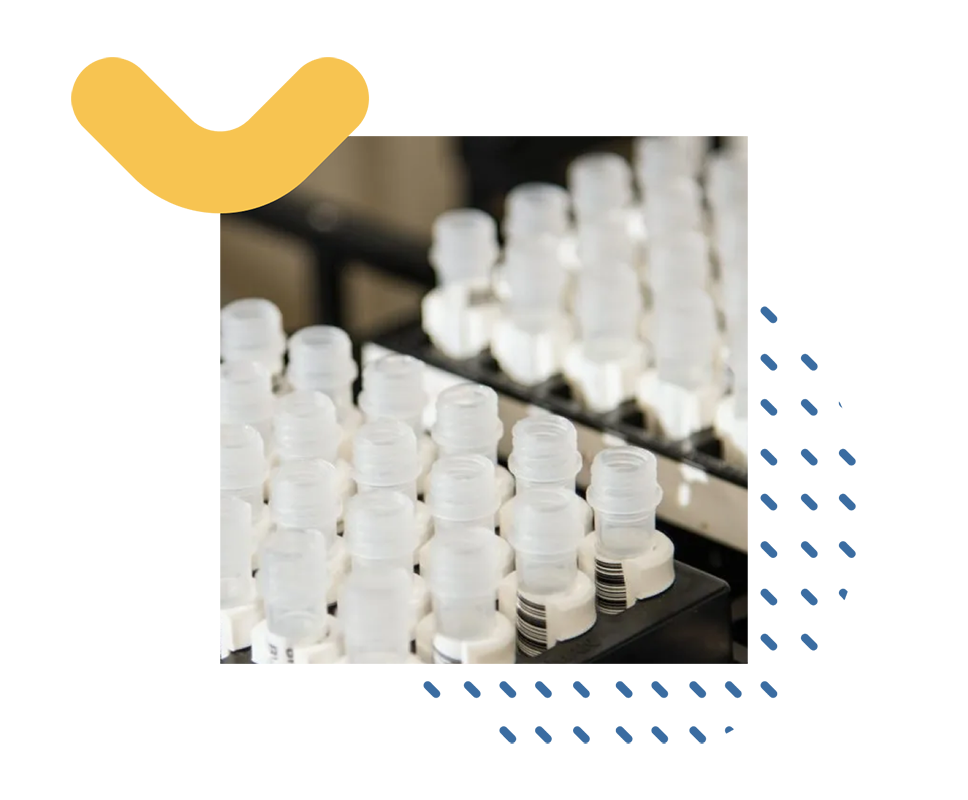What you need to know
Many people have already had to give a urine sample. This may be due to a routine examination by the family doctor, for admission to hospital or to get to the bottom of symptomatic complaints.
Urine tests are used in various forms to clarify certain diseases and monitor their progress. The results of a urine test can provide valuable indications of a urinary tract infection or diabetes, for example.
Do you suffer from pain when urinating, increased urine production or unclear abdominal discomfort? Then you should seek clarification from your doctor with the help of a urine test.
In this article, you will find out which different urine tests are available, what their results mean, which symptoms require a urine test and which substances the urine is tested for.


Urine tests are often used during routine examinations in order to rule out or detect possible illnesses, such as a urinary tract infection, and to be able to initiate appropriate treatment.
There are various urine tests that can analyze urine for different substances. We distinguish between …
… Rapid urine test,
… Urine status,
… urine culture,
… 24-hour urine collection
… and the pregnancy test.
With the help of a urine test, doctors can detect indications of diseases of the kidney and urinary system, metabolic disorders and liver diseases, as the composition of urine provides valuable information about the functioning of our organs.
Regular excretion is important so that substances that are no longer needed during metabolism are removed from the body and our water balance is regulated. Even before the urine sample is examined more closely in the laboratory, the color, odor and quantity of the urine are of significant importance.
For example, if the urine is only present in small quantities and is dark in color, these factors may indicate that you have not consumed enough fluids or that your kidneys may not be functioning properly. The average amount of urine excreted by a healthy person every day is 500 to 2000 milliliters. Normally, your urine should be clear, yellow in color and not cloudy.
Cloudy and flaky urine, on the other hand, can indicate a urinary tract infection and a reddish color can sometimes mean blood in the urine.
However, you can only obtain exact results by testing the urine with a test strip or in the laboratory. Of the five standard urine tests mentioned, two can be carried out by you at home, while the remaining three are carried out in a laboratory.
Our urine has a pH value between 5 and 6, which means it is slightly acidic. A urine test can also be used to examine the pH value. If this is below 5, the urine is acidic and this can lead to severe diarrhea or diabetes mellitus. A pH value that is higher than 6 can mean a urinary tract infection, for example.
Normally, your urine contains a small amount of protein or none at all. However, if a certain amount is detected in the urine, this may be a cause of kidney disease.
Among other things, our kidneys are responsible for the sugar in our blood. However, above a certain amount of sugar, the kidneys cannot retain it in the body, so it ends up in the urine. Among other things, this can lead to diabetes mellitus or certain types of cancer.
Some certain urinary tract germs lead to the formation of nitrite.
Ketones are also not normally present in urine. They are a sign of increased fat loss in the body or incorrectly controlled diabetes mellitus.
Red blood cells in the urine can be the cause of urinary tract inflammation or bladder cancer. White blood cells usually indicate an inflammation of the kidney or urinary bladder.
If you visit your doctor because you suspect you have a urinary tract infection, you can be well prepared in advance, knowing that you will have to give a urine sample. You should only clean your genital area with water. In this way, you reduce the risk of the urine being contaminated by bacteria and thus falsifying the result.
As a rule, midstream urine is used for a urine test. You can obtain this by stopping the stream a few seconds after starting to urinate and then using a cup to collect the middle stream that you obtain after continuing to urinate.
The cup is usually made available to you at the doctor’s surgery.
The rapid urine test is carried out using a test strip, which is also available in pharmacies without a prescription. You can therefore carry out the test yourself at home. However, you should only do this in consultation with your doctor and not use the test for self-diagnosis.
In most cases, rapid urine tests are part of routine examinations in GP surgeries, during pregnancy check-ups, as part of hospital admissions or as a precaution before an operation.
Rapid urine tests are also used for acute abdominal pain, abdominal or back pain, painful urination and when blood is detected in the urine. Some diabetics check their sugar levels using a rapid urine test.

Once you have collected the urine sample in a cup, hold the test strip, which is divided into different colored fields, in the urine for a few seconds. After some time, the fields on the strip change color depending on the concentration of the respective substances in the urine.
On an accompanying urine test tube you can see which coloration indicates normal and abnormal values. If you compare the colorations of the test strip with the tube, you will obtain the corresponding results.
Many substances contained in urine can only be detected above a certain level. The quantity required for verifiability is the standard. If substances are present in smaller or larger quantities, this is referred to as a deviation from the norm.
A rapid urine test can be used to check the pH value, proteins, sugar, nitrite, ketone, bilirubin, urobilinogen and red and white blood cells.
If, for example, elevated protein levels are found in the urine, this may indicate inflammation of the kidneys. Ketone and sugar in the urine can be the cause of increased sugar levels and leukocytes (white blood cells), as well as nitrite, can indicate a bacterial infection.
However, the results of a rapid urine test are not always reliable. For more precise results, the urine sample must be examined in a laboratory. However, if the discoloration on the test strip gives conspicuous results, you should always speak to your doctor.
The urine status is often used for diabetes, certain blood disorders and urinary stones. A urine status can also be used to clarify and monitor urinary tract infections, bleeding in the kidney or urinary system and diseases of the kidneys or liver.
This test method consists of three parts:
In addition to the substances that are also examined using the urine rapid test, a urine status also checks creatinine, bacteria, cylinders, crystals and epithelial cells in the urine.
If cholesterol crystals are found in the urine, for example, this can indicate an elevated cholesterol level in the urine. Cylinders, on the other hand, can indicate kidney disease, such as pyelonephritis.
If abnormal values are detected, more detailed examinations can follow, such as a blood test.
A urine culture is used to examine whether your urine contains pathogens. A urine culture is usually performed when a urinary tract infection is suspected.

The urine sample you take from the midstream urine is sent to a laboratory where plates with culture media on which pathogens can grow are immersed in the sample. The container in which the sample is collected is then tightly closed and placed in an incubator for one to two days.
If pathogens such as bacteria and fungi are present in the urine, they can grow into colonies during this period due to the culture media.
As mentioned, urine cultures are used to test urine for pathogens such as bacteria and fungi. If these are actually present in the urine, the size, shape and color of the cells already give an indication of which bacteria and fungi could be involved.
Once the bacteria and fungi present in the urine have been identified, an appropriate antibiotic can be prescribed for treatment.
The 24-hour urine collection test method is used to check the increased excretion of hormones and their metabolic products due to any diseases of the endocrine system.
As the name suggests, this is a procedure in which you collect your urine in a container over a period of at least 24 hours. This container is provided by the doctor’s surgery and usually contains an additive that prevents bacteria from growing in the urine during the collection period.
It is best to start the method on a new day. However, the first sample after getting up is not yet collected, but only the time of the first urination is written down.
At this point, you start the 24-hour period in which you collect every drop of urine in the container. You should keep the container in your refrigerator during this period. Once the 24 hours have passed, collect the first urine that you excrete after this period in the container and end the collection time.
The urine is then sent to a laboratory where it is analyzed.
The 24-hour urine collection method is used to determine how much of certain substances your body is excreting.
The test results provide information about the protein and creatinine content of your urine. If your urine contains too little creatinine, this is a sign that your kidneys may no longer be working properly.
If there is too much protein in your urine – i.e. if you have proteinuria – this may indicate certain diseases such as heart failure, diabetes mellitus, pyelonephritis, a urinary tract infection or kidney cancer.
The pregnancy test is probably the most beautiful test method in the urine test category. The focus here is not on detecting an infection or illness, but on the possible start of a new life.
Pregnancy tests are usually used when a woman has not had her period for a long period of time. Some pregnancy tests can provide a result as early as 8 to 10 days after the absence of your period. However, pregnancy tests are not 100% reliable. The result can be distorted by the following circumstances:
For this reason, you should always consult a gynecologist for confirmation. Pregnancy tests are freely available in pharmacies, drugstores, department stores and on the Internet.
How exactly the pregnancy test should be used is explained in the relevant package leaflet. As a rule, however, pregnancy tests, like rapid urine tests, are best carried out after getting up with the morning urine, whereby the test is held under the urine stream while urinating.
A pregnancy test will show a positive result if your urine contains the pregnancy hormone human chorionic gonadotropin (hCG), which is produced in the placenta.

A pregnancy test can be used to determine a pregnancy provisionally – until the gynecologist’s final results are available.
In principle, urine tests are risk-free. However, as already mentioned, various circumstances can falsify the test result, as a result of which prescribed treatment or prescribed medication may not achieve the desired improvement.
In exceptional cases, the urine sample is taken using a catheter. This method can lead to infections and injuries to the urethra. As a rule, however, you do not have to fear any serious risks with a urine test.
A urine test is an important examination method for detecting numerous diseases and assessing their progression. The test provides information about a wide range of possible physical dysfunctions and is also an extremely uncomplicated examination with few risks. This is why it enjoys great popularity in the medical sector.

Choose a suitable health test from our wide range of products.
At a Probatix partner near you, a small amount of blood will be taken professionally – usually with a small prick in the fingertip.
Your result will automatically appear in your personal health portal. Including explanations and timelines.